Projects
Project Editor: Bryce Rowell, English 418/818, Fall 2005
FIELD DAYS
The Early Years 1911-1913
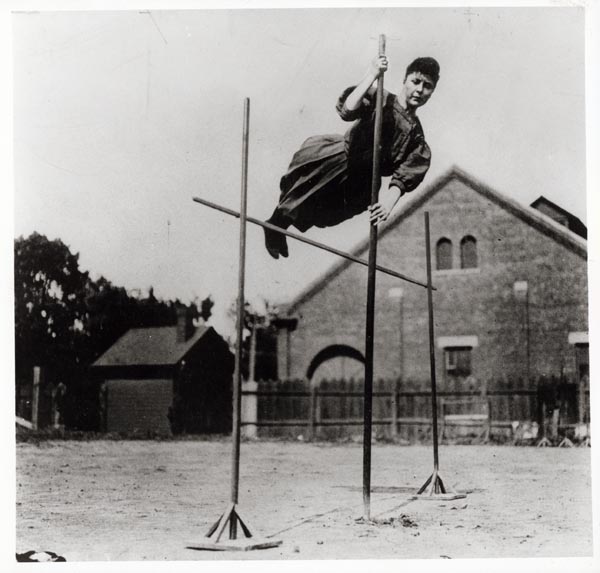
As women's gymnasium classes developed at the University of Nebraska-Lincoln in the late nineteenth and early twentieth centuries, the Physical Education Department for Women organized the first intramural athletic events for women of the university. Immensely popular with these female athletes were sports like basketball, baseball, and field hockey ("The Girls Gymnasium"). Still, these athletic contests were accessible only to women enrolled in physical education classes and were largely unseen by the public. Over the span of three short years, this would all change.
In 1911, the first women's track and field meet at the university was held on Nebraska Field. All members of the girls' gymnasium classes were eligible to compete in events ranging from the high jump to hurdles to the shot put. There was also a baseball game, but it ended scoreless because the scorekeeper got tired and went home after the fifth inning. No results from this first meet were ever submitted to the athletic office or theDaily Nebraskan. However, unofficial reports claim that one athlete entered in the shot put competition broke the men's record in that event. For reasons of "modesty," men were not allowed to attend the competition, and as theDaily Nebraskanhad no female reporters at the time, there was no one in attendance to document the results definitively. Interestingly enough, theDaily Nebraskanarticle written about the meet characterized it as "an innovation in university athletics" and "something new and decidedly unique".
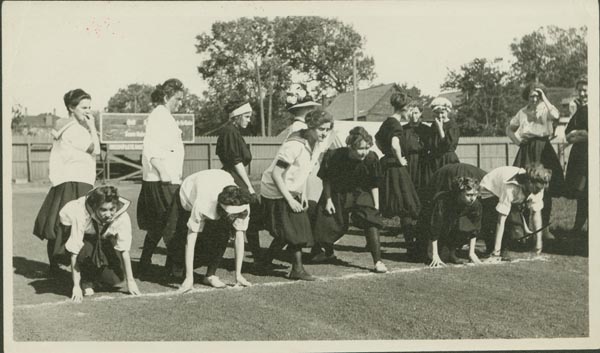
| Sprinters take their marks. |
Besides the first ever women's track meet at the University of Nebraska-Lincoln and the records which were allegedly broken, something else made May 12, 1911 a noteworthy day. A male student who had been watching the athletic competitions through a "crack in the fence" was carried off by a policeman. According to theDaily Nebraskan, this student was a "prominent" member of the student body and the primary source for their article which appeared in print the next day ("Records Are Smashed"). This event was later spoofed in the next edition of the university yearbook Cornhusker.
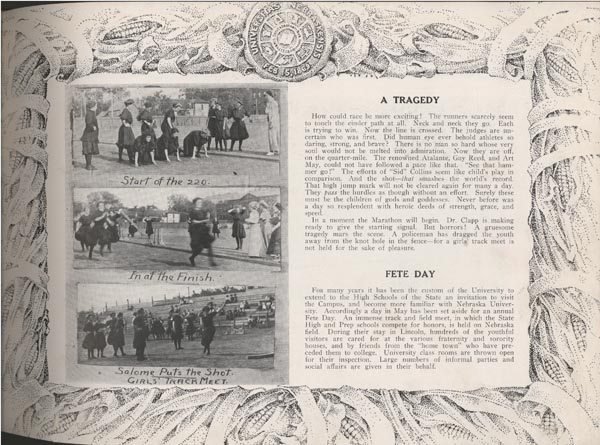
The successful operation and notoriety of the first ladies' field day allowed the Physical Education Department for Women to make the track meet an annual event. On May 9, 1912, the second annual women's intramural track and field day was held on Nebraska Field. Once again, men were not to be admitted. However, like the student who found the crack in the fence the year before, the men of UNL were not to be denied their chance to witness the event. Reports from the Daily Nebraskanclaim that law students watched from the third floor windows of University Hall. Apparently they became so excited that Miss Thompson, the law librarian, had to move them away from the windows. Throughout the contests, loud applause could be heard from engineering students at the windows of the Engineering Building. In addition, the Daily Nebraskanreported that the university band was in attendance that day with a "sudden increase in size," and they kept the festivities going with their "music and hilarity" . The meaning of these statements was not supplied but their context seems to suggest that men in the band were allowed to attend the track meet in order to perform.
The third annual women's track and field day brought with it a revolutionary change in women's athletics at the University of Nebraska-Lincoln. For the first time, men were allowed to attend the event. Seizing hold of the popularity of the contest, the university charged admission and raised over seventy dollars in the process. More than 800 people were in attendance that day, and they did not shy away even as it began to rain. The baseball game held that day was said by theDaily Nebraskanto have been the highlight of the day. As the crowd cheered, the high-scoring affair ended with the freshmen team defeating the sophomore team fourteen to eight. The meet was seen as a huge success both financially and athletically, and it transformed women's athletics at the university forever .
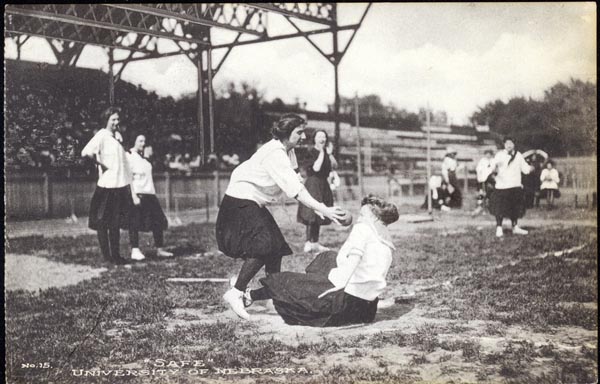
The efforts of all these women athletes paved the way for future generations to compete on the collegiate level. However, their success on the field did not always bring them the respect they deserved. Their actions were often criticized or openly mocked as is the case with this cartoon from Awgwan, a student-life magazine.
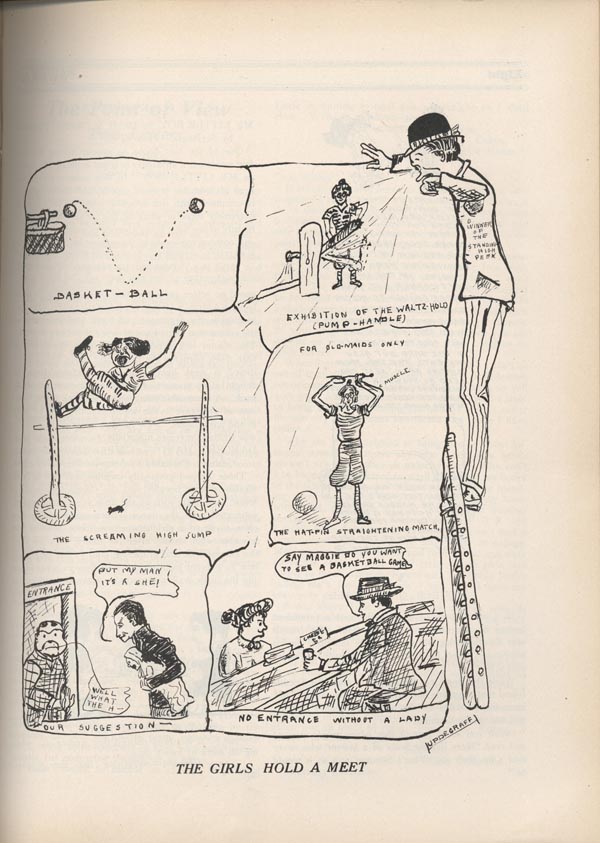
Still, these women athletes persevered, and their efforts and the efforts of women like them around the country saw the formation of the Women's Athletic Association (WAA) in March of 1917. Created to "promote athletic activities to the end of a higher physical efficiency, greater class consciousness, and to create a spirit of good sportsmanship," the WAA would sponsor women's athletic events from then on making competitions an easier thing to come by for women athletes ("Women's Athletic Association").
Works CitedAnonymous. "Girls Annual Contest Draws a Big Crowd."Daily Nebraskan. 10 May 1912: 3. Anonymous. "Records Are Smashed." Daily Nebraskan. 13 May 1911: 1. Anonymous. "Yes, They're Right There." Daily Nebraskan. 15 May 1913: 1. "The Girls' Gymnasium." Cornhusker. Lincoln: Nebraska UP, 1902. "Women's Athletic Association." Cornhusker. Lincoln: Nebraska UP, 1926.
| 
